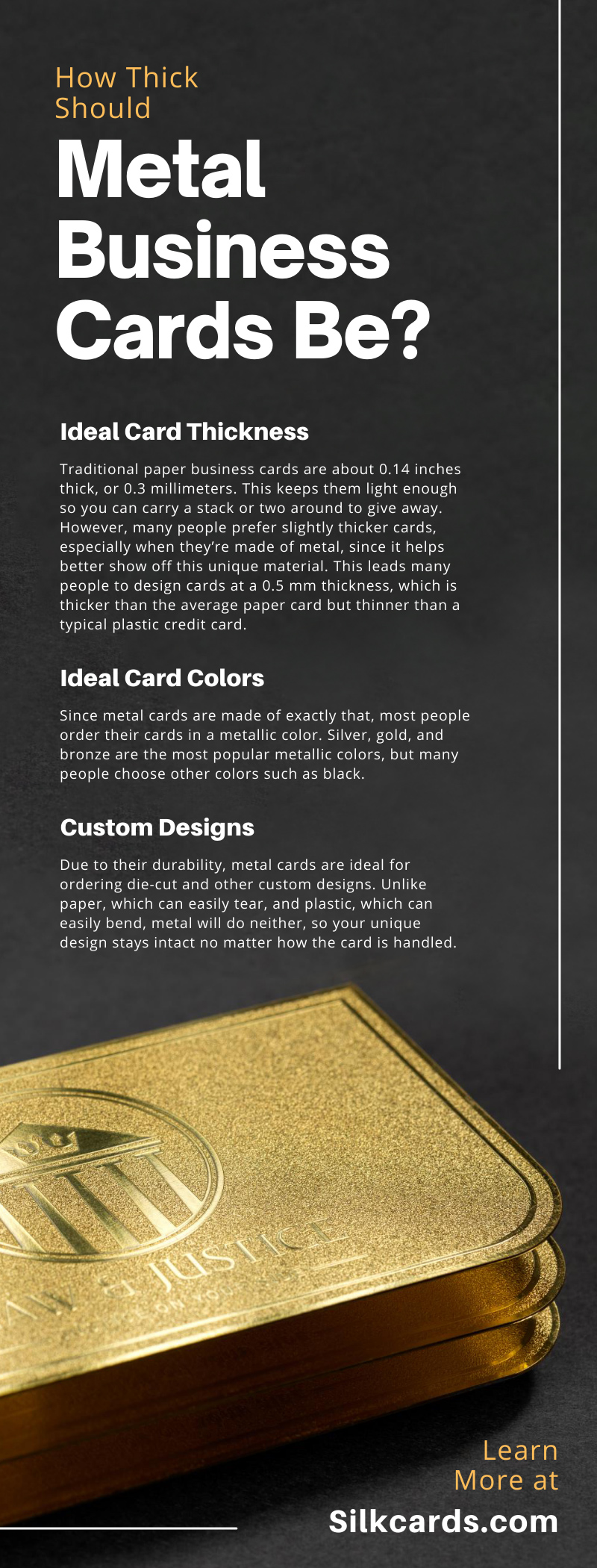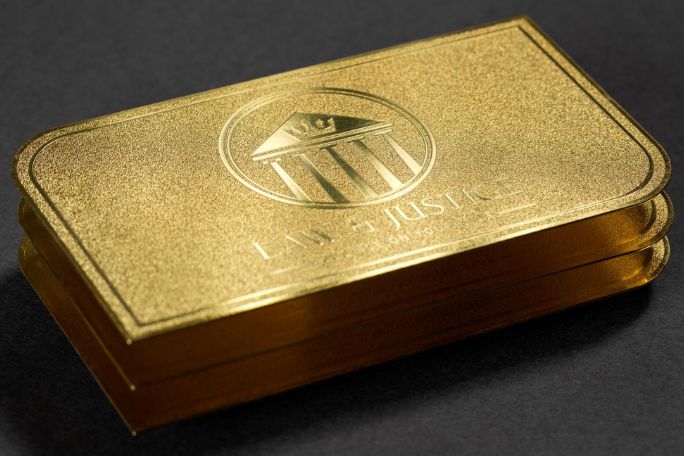Nowadays, everyone seems to have a business card. As more people work side hustles or change jobs and want to share their new venture using business cards, it seems everyone has a card in their pocket. While it’s fantastic that people want to share what they do, especially if they’re striking out on their own or have recently made a career change, the presence of so many business cards in the world means you have a lot of competition.
If you want to make a lasting impression when you hand over your card, then the card must be as unique as you are. That’s one of the reasons people are ordering business cards out of materials other than paper. Metal is quickly becoming a favorite option since it’s exceptionally durable and has great customization options. Once you decide that metal is your material, you must decide on the details. How thick should your metal business cards be? What color should they be? Should you add cutouts or any other custom designs? We can help you make all those decisions. Keep reading to learn all these details about designing metal business cards.
Ideal Card Thickness
Traditional paper business cards are about 0.14 inches thick, or 0.3 millimeters. This keeps them light enough so you can carry a stack or two around to give away. You can order metal business cards in the same thickness, although they weigh more given the material. This is the ideal thickness if you plan to have unique designs cut out of your card.
However, many people prefer slightly thicker cards, especially when they’re made of metal, since it helps better show off this unique material. This leads many people to design cards at a 0.5 mm thickness, which is thicker than the average paper card but thinner than a typical plastic credit card. It’s still thin enough to fit in a wallet easily, but the additional weight makes it feel more special.
A typical plastic credit card is about 0.8 mm thick, and many people also choose this thickness for cards, although most people prefer it for membership cards, not business cards. This is because many membership cards have a magnetic strip on them that you must swipe to use them, and it’s easier to do so if the metal card is the same thickness as a traditional plastic card. However, you can still choose this for your business cards as well.
Anything 1 mm and thicker isn’t a practical choice for a business card. Cards that are 1 mm thick are too heavy to carry in packs, which makes it difficult for you to carry and give them out at large functions. This thickness can also prevent people from easily sliding the card into their wallet, especially if that wallet is already full of other cards. However, a thicker card is necessary if you’re designing your card to have a secondary function, such as a bottle opener. Decide exactly how you want your card to function so you can choose the thickness of the card appropriately.
Ideal Card Colors
Since metal cards are made of exactly that, most people order their cards in a metallic color. Silver, gold, and bronze are the most popular metallic colors, but many people choose other colors such as black. You can choose any color for the print you want on the card, but sometimes the print color will look different than intended since the background isn’t white like a paper or plastic card.
You can order a card in any color, no matter how thick. The thickness of the card doesn’t affect the color. However, if you’re choosing a card thicker than 0.5 mm, you should choose the color wisely. These cards are already bold and thicker than traditional business cards, so they already have something extra making them stand out. Don’t choose a color that will cause them to stand out in the wrong way. Consider the design and function of the card and the colored print you’re getting on it so that you can choose a color that complements the rest of the card.
Custom Designs
Due to their durability, metal cards are ideal for ordering die-cut and other custom designs. Unlike paper, which can easily tear, and plastic, which can easily bend, metal will do neither, so your unique design stays intact no matter how the card is handled.
As we mentioned above, many people choose cards with a 0.3 mm thickness when they’re planning to order a die-cut design. The thinness of the card helps the design look flawless, and it’s easier for the manufacturer to cut pieces out of a thin card. However, you can still request die-cut designs on thicker cards. It’s important to note that some manufacturers cannot offer die-cut designs on cards thicker than one millimeter. Laser engraving is still an option at any thickness, so no matter what thickness and design you have in mind, you’ll be able to see it come to fruition.
So, how thick should your metal business cards be? The ideal thickness is partially affected by how you want the card to function. If it’s just a business card, not a membership card or an extra tool like a bottle opener, then 0.3 mm or 0.5 mm are the ideal choices. A measurement of 0.3 mm is perfect if you’re planning to order a die-cut design, as we mentioned above, but you can order a die-cut design in either thickness. Anything thicker than 0.5 mm is still useful and can look great, but this thickness allows your card to have an impressive weight without weighing so much that you can’t carry it around in stacks.
If you’re looking for custom metal business cards for your business, then you’ve come to the right place. Our metal cards are bold and memorable, and we include one free laser cut and laser engraving with the purchase, which means you can get precisely what you want at a price you can afford. If you have any questions about metal cards or your design options, feel free to reach out.


